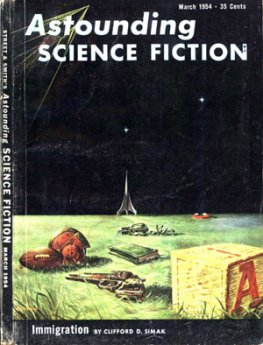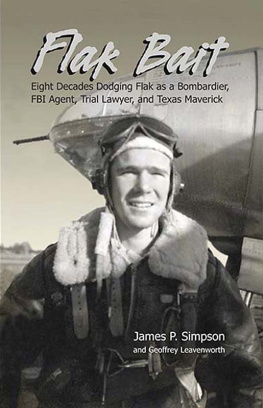James McLeroy - Bait: The Battle of Kham Duc
Here you can read online James McLeroy - Bait: The Battle of Kham Duc full text of the book (entire story) in english for free. Download pdf and epub, get meaning, cover and reviews about this ebook. year: 2019, publisher: Casemate, genre: Politics. Description of the work, (preface) as well as reviews are available. Best literature library LitArk.com created for fans of good reading and offers a wide selection of genres:
Romance novel
Science fiction
Adventure
Detective
Science
History
Home and family
Prose
Art
Politics
Computer
Non-fiction
Religion
Business
Children
Humor
Choose a favorite category and find really read worthwhile books. Enjoy immersion in the world of imagination, feel the emotions of the characters or learn something new for yourself, make an fascinating discovery.

- Book:Bait: The Battle of Kham Duc
- Author:
- Publisher:Casemate
- Genre:
- Year:2019
- Rating:3 / 5
- Favourites:Add to favourites
- Your mark:
- 60
- 1
- 2
- 3
- 4
- 5
Bait: The Battle of Kham Duc: summary, description and annotation
We offer to read an annotation, description, summary or preface (depends on what the author of the book "Bait: The Battle of Kham Duc" wrote himself). If you haven't found the necessary information about the book — write in the comments, we will try to find it.
Bait: The Battle of Kham Duc — read online for free the complete book (whole text) full work
Below is the text of the book, divided by pages. System saving the place of the last page read, allows you to conveniently read the book "Bait: The Battle of Kham Duc" online for free, without having to search again every time where you left off. Put a bookmark, and you can go to the page where you finished reading at any time.
Font size:
Interval:
Bookmark:
THE BATTLE OF KHAM DUC
James D. McLeroy
and Gregory W. Sanders

AN AUSA BOOK
Association of the United States Army
2425 Wilson Boulevard, Arlington, Virginia, 22201, USA
Published in the United States of America and Great Britain in 2019 by
CASEMATE PUBLISHERS
1950 Lawrence Road, Havertown, PA 19083, USA
and
The Old Music Hall, 106108 Cowley Road, Oxford OX4 1JE, UK
Copyright 2019 James D. McLeroy and Gregory W. Sanders
Hardcover Edition: ISBN 978-1-61200-812-7
Digital Edition: ISBN 978-1-61200-813-4
Kindle Edition: ISBN 978-1-61200-813-4
A CIP record for this book is available from the British Library
All rights reserved. No part of this book may be reproduced or transmitted in any form or by any means, electronic or mechanical including photocopying, recording or by any information storage and retrieval system, without permission from the publisher in writing.
For a complete list of Casemate titles, please contact:
CASEMATE PUBLISHERS (US)
Telephone (610) 853-9131
Fax (610) 853-9146
Email:
www.casematepublishers.com
CASEMATE PUBLISHERS (UK)
Telephone (01865) 241249
Email:
www.casematepublishers.co.uk
James D. McLeroy dedicates this book
to the memory of
Special Forces Master Sergeant M. C. Windley,
SOG One-Zero, dedicated Bac Si, fearless warrior
and
Dr. Mary Lou Sherbon,
loving sister of a Vietnam warrior
and special friend of many others.
Gregory W. Sanders dedicates this book
to the memory of
Army First Lieutenant Dale Reising,
Advisory Team 92, MACV,
who gave his life for his country
in Go Cong Province, South Vietnam,
on May 29, 1970,
and
Professor Gordon Bakken,
California State University, Fullerton,
whose legacy lives on in his students.
The only visible remains of Kham Duc Special Forces camp was the battered concrete base and jagged steel stump of the flagpole. Knee-high grass hid the half-buried foundations of its buildings, and the only traces of its once-long airstrip were scattered patches of asphalt in a broad field of weeds. Standing on the flagpole base, I stared at the low hills on the northeast and southwest ends of the airstrip, then west at the tall, jungle-covered hill looming over the valley. My gaze drifted eastward past the new town where a little village used to be, past the overgrown airstrip, past the hidden camp site, past the heavily vegetated river gulch behind it to the taller hills overlooking the valley on the other side of the river.
The last time I saw that valley, it looked like a war movie. Once I lived and nearly died there, and for me it is a valley of ghosts. They are the ghosts of the many hundreds of soldiers we killed there and the ghosts of almost two hundred Vietnamese civilianswomen, children, and old men of the villagekilled by those NVA soldiers. As I surveyed the peaceful scene in June 1998, memories of the way it looked thirty years before in May 1968 slowly drifted back in a lurid collage of sights, sounds, and sensations:
a desperate voice in the night, shouting on the radio over the noise of firing, begging for air support for his indigenous company, about to be overrun by an NVA battalion
flashes of firing and explosions in the darkness, where small squads on isolated hilltop outposts were being overrun and killed by NVA shock troops
helicopters crashing and burning; planes crashing and burning
the throbbing whine of a piston-engine attack plane, trailing smoke, straining to climb high enough for the pilot to bail out before it burned up and plunged to earth
the shrieking howl of jet fighter-bombers streaking by so low and close that I could glimpse the pilots helmets
the shattering blasts of high-explosive bombs; the crackling ripple of cluster bombs; the rasping growl of automatic aircraft cannons and multi-barreled aircraft machine guns
enemy bodies hurled through the air like rag dolls from a bomb hit on an anti-aircraft gun
the pitiful face of a doomed North Vietnamese Army soldier, wide-eyed and ashen with terror, stumbling toward me like an obedient robot through a maelstrom of bullets and shrapnel, as his comrades were falling all around him, knowing his wretched life was measured in seconds
the chilling sound of Special Forces commandos, determined to fight to the death against the onrushing horde of NVA soldiers, saying terse farewells to each other
the thunderous boom and roiling mushroom cloud of the camps exploding ammunition dump; the roar of huge black rubber fuel bladders along the airstrip erupting in red fireballs
the greasy feel and acrid smell of my damp, salt-encrusted fatigues under a heavy flak jacket, sweat-soaked, dirt-smeared, and re-soaked in three days of heat, humidity, and tension
flashes of sheet lightning inside a dark, towering monsoon cloud moving toward the valley, threatening to envelope it and cancel our close air support, the only thing keeping us alive
I thought then that I would never return to that haunted valley. When I finally did thirty years later, it was with a U.S. military casualty recovery team searching for the scattered remains of long-abandoned American soldiers and Marines. More U.S. missing-in-action cases resulted from the battle of Kham Duc Special Forces camp and a temporary camp site south of it called Ngok Tavak than from any other battle in seven years of major U.S. combat in the Vietnam War.
As soon as I returned to Kham Duc, I began to sense a deep, vague awareness that some important part of me had never fully left that morbid killing groundand probably never will.
James D. McLeroy
I first saw Kham Duc in July 1970, when it was reoccupied for six weeks in a joint operation by a battalion of the Americal (23rd) Division and a South-Vietnamese battalion. The brief 1970 operation, in which I played a very minor role, was a walk in the sun, as the grunts used to call an easy patrol, compared to the battle there two years before. I returned to Kham Duc in 2006, searching for answers to lingering questions about those who fought there in May 1968.
As we entered the Kham Duc valley, the air seemed heavy with the specter of the missing American soldiers abandoned there and at Ngok Tavak five miles to the south. Most of the men who were at Kham Duc in 1970 had no knowledge of those missing-in-action from the 1968 battle. I did. Before flying to Kham Duc from the Americal Division base camp at Chu Lai on July 12, 1970, I learned of the abandoned bodies of those poor souls. Privately, I believed the Army had betrayed not only those men, but their families as well, leaving them to grieve with a lifetime of unanswered questions about their fate.
Decades later, retired Major General (MG) A. E. Milloy, the Americal Division commander when Kham Duc was reoccupied, told me that nearly all those men who were missing-in-action from the 1968 battle didnt stand a chance. In an unusual departure from his normal gentlemanly manner, he spared no unkind words for the officers he felt were responsible for their deaths, including General William Westmoreland.
Such a harsh condemnation from General Milloy was unexpected, because I knew his reputation. He was as aggressive a senior commander as ever served in South Vietnam, but he did not tolerate recklessness, especially with the lives of those he commanded. He was an up-from-the-ranks soldiers general, who knew from his own battlefield experiences in World War II and Korea the kind of missions that unnecessarily waste the lives of American soldiers. His comments gave me a new perspective on the Kham Duc missing-in-action cases. Reconciling what happened there in May 1968 was ultimately a question of accountability.
Font size:
Interval:
Bookmark:
Similar books «Bait: The Battle of Kham Duc»
Look at similar books to Bait: The Battle of Kham Duc. We have selected literature similar in name and meaning in the hope of providing readers with more options to find new, interesting, not yet read works.
Discussion, reviews of the book Bait: The Battle of Kham Duc and just readers' own opinions. Leave your comments, write what you think about the work, its meaning or the main characters. Specify what exactly you liked and what you didn't like, and why you think so.








